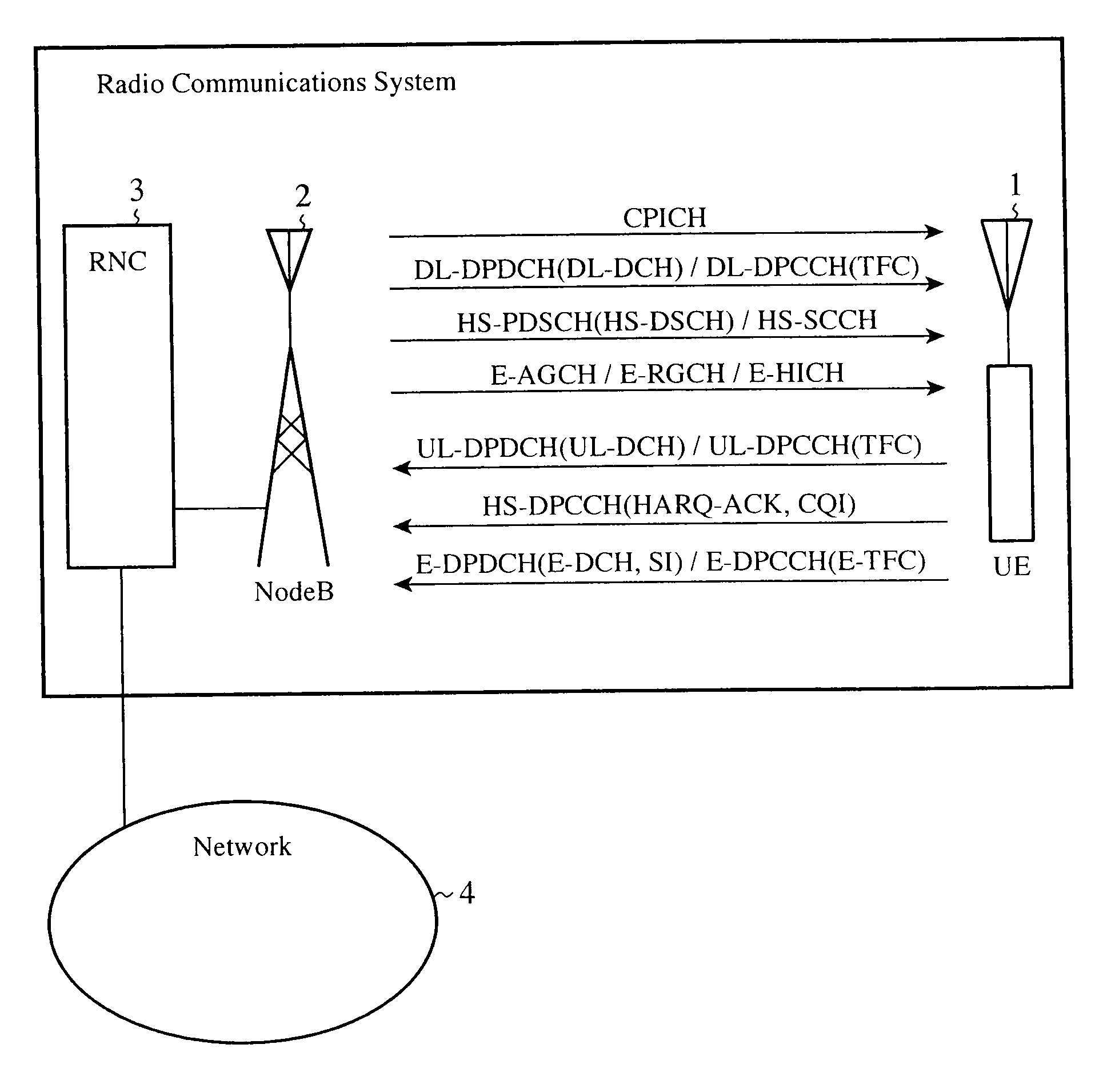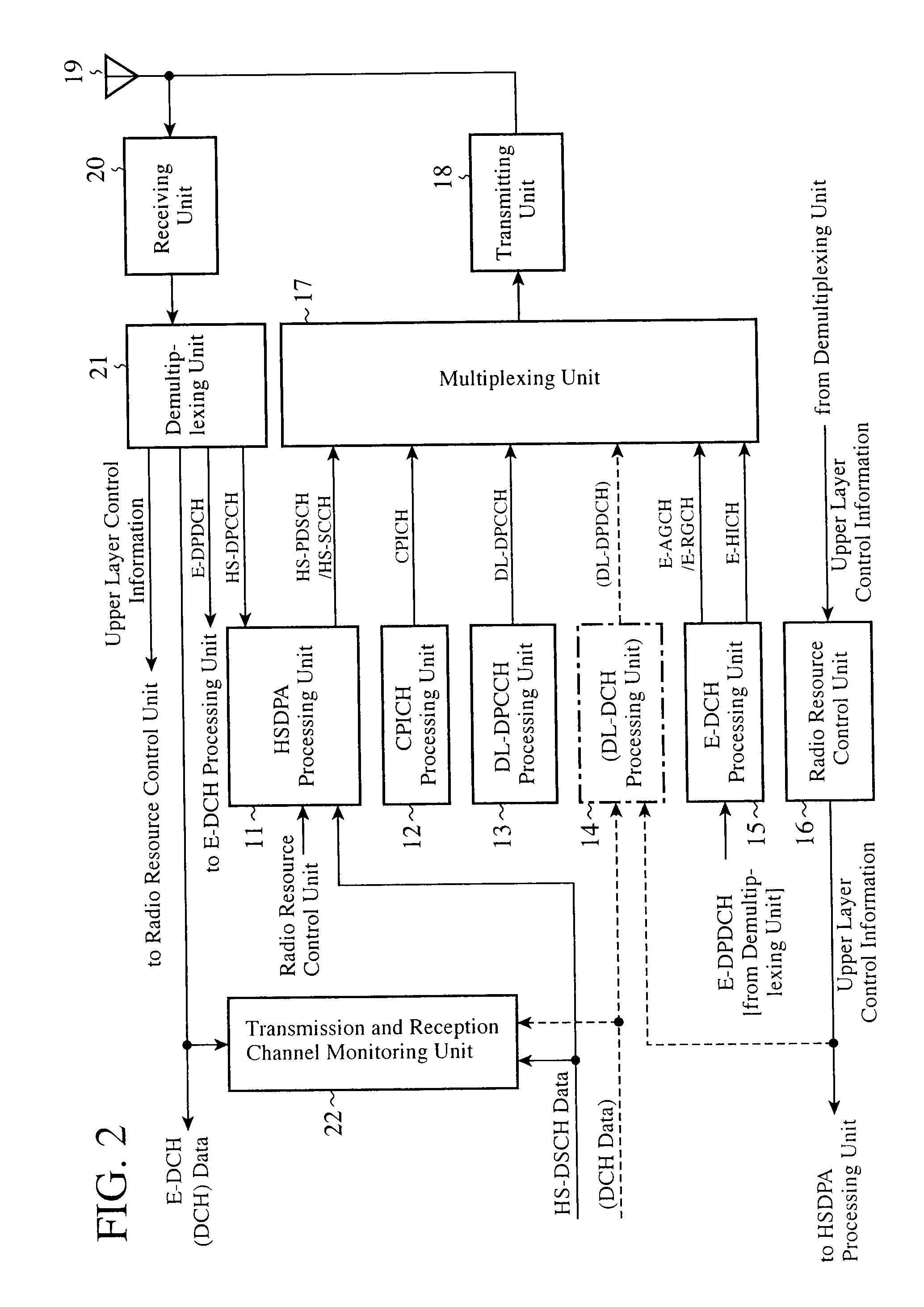Mobile station, fixed station, and radio communication system
a mobile station and radio communication technology, applied in the field of radio communication system, can solve the problems of mobile stations which do not contribute to data transmission, and require a lot of time to switch between modes, so as to avoid wasteful consumption of uplink radio resources
- Summary
- Abstract
- Description
- Claims
- Application Information
AI Technical Summary
Benefits of technology
Problems solved by technology
Method used
Image
Examples
embodiment 1
[0053]In accordance with this Embodiment 1, a transmission control method of controlling transmission of a control channel is defined in detail according to a transmission status (a state or a mode) of a channel for packet transmission. As a result, the operations of mobile stations are unified.
[0054]In a communications system which uses a W-CDMA method, when transmission and reception of data are carried out using channels exclusively used for packet (used for HSDPA and for E-DCH), and conventional channels (a DCH and a DPDCH) are not transmitted as a real transmission time (or a transmission channel setting) or the transmission capacity of a mobile station, transmit power control is performed on an uplink control channel (particularly, a control channel DPCCH) in a physical layer.
[0055]Furthermore, the DPCCH is multiplied by a coefficient for channel transmit power control before the DPCCH is multiplexed with another channel.
[0056]FIG. 1 is a block diagram showing a radio communic...
embodiment 2
[0269]In accordance with above-mentioned Embodiment 1, before a DPCCH is multiplexed with other uplink channels, the DPCCH is independently multiplied by the coefficients Cc and βc for transmit power control, as previously explained. In contrast, in accordance with this Embodiment 2, intervals at which a channel for transmit power control used for control of transmit power is to be transmitted is controlled according to the transmission status of a channel exclusively used for packet currently monitored by a transmission and reception channel monitoring unit 41, as will be explained below.
[0270]More specifically, in accordance with this Embodiment 2, a mobile station 1 which can discontinuously transmit an uplink DPCCH (UL-DPCCH), which, in a conventional art, can be transmitted continuously according to the transmission status of a channel exclusively used for packet, decreases or increases the degree (cycle) of the discontinuous transmission when switching between the continuous t...
embodiment 3
[0287]In above-mentioned Embodiment 2, the transmission intervals at which a channel for transmit power control used for control of the transmit power is to be transmitted are controlled according to the transmission (or reception) status of a channel exclusively used for packet currently monitored by the transmission and reception channel monitoring unit 41, as previously mentioned.
[0288]In contrast, in accordance with this Embodiment 3, in consideration of a transmit power set value for the channel for transmit power control for which a transmission mode is set up by a UL-DPCCH processing unit 32, a transmit power margin value of the channel exclusively used for packet is calculated, and the channel for transmit power control and the channel exclusively used for packet which is transmitted within the limits of the transmit power margin value are multiplexed.
[0289]More specifically, in accordance with this Embodiment 3, a case in which data transmission rate information about a cha...
PUM
 Login to View More
Login to View More Abstract
Description
Claims
Application Information
 Login to View More
Login to View More - R&D
- Intellectual Property
- Life Sciences
- Materials
- Tech Scout
- Unparalleled Data Quality
- Higher Quality Content
- 60% Fewer Hallucinations
Browse by: Latest US Patents, China's latest patents, Technical Efficacy Thesaurus, Application Domain, Technology Topic, Popular Technical Reports.
© 2025 PatSnap. All rights reserved.Legal|Privacy policy|Modern Slavery Act Transparency Statement|Sitemap|About US| Contact US: help@patsnap.com



